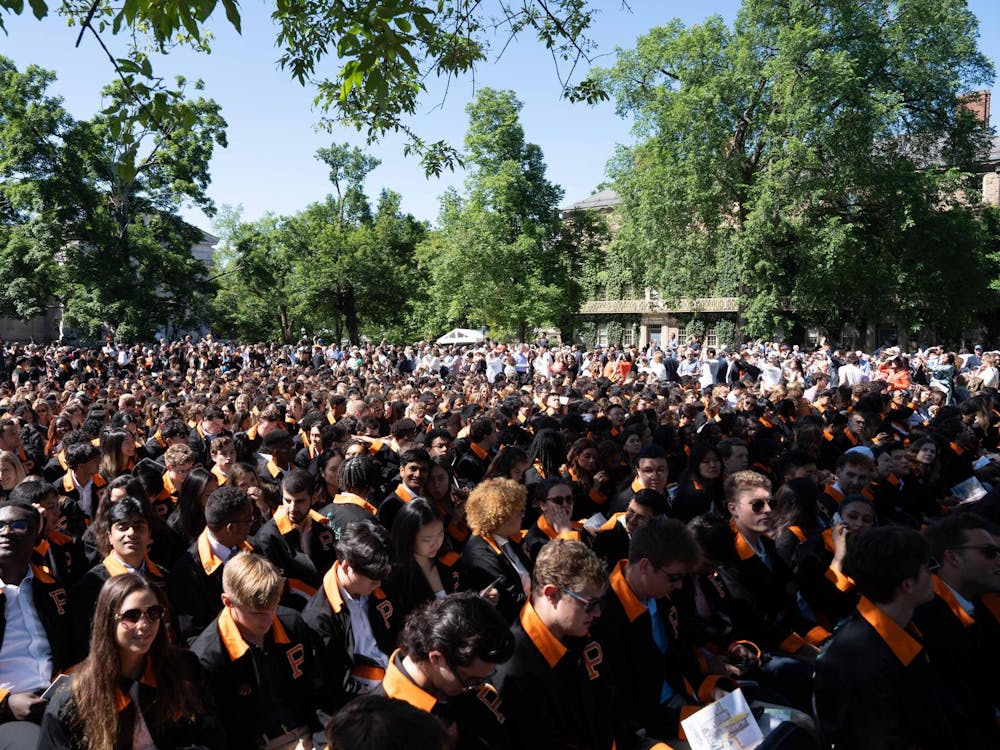A new structure went up on campus over the weekend — which wouldn’t normally be news — but this one’s a bit different. A gigantic penis is emblazoned across it in bronze spray paint, for one thing. And then, not to be outdone, someone else drew a neon pink vagina to accompany it. Amid the genitalia — which, to be fair, only comprise a small section of the structure’s surface — are unsigned statements of angst and discontent.
The edifice itself comprises seven white wooden boards, each about 8 feet high and 4 feet wide, which are linked to one another by six unpainted (and un-graffitied) wooden planks. Together, the boards zigzag to resemble a room divider. The project was launched as a part of the class, VIS 439: Art as Interaction. According to the class’stwitter feed and Facebook page, it was unveiled on the North Lawn of the Frist Campus Center on Sunday, April 13.
The work is entitled “What Will You Bring to the Surface?”. It dares observers to get involved by urging passersby to jot down things that trouble them but that they are afraid to say aloud. The idea, I surmise, is to empower students to air their grievances with impunity. Based on the diverse, at times profanity-laden, complaints scrawled on the boards, it seems to have worked. Posts range from multi-sentence tirades against oligarchs to — what I would hope are — sardonic defenses of Susan Patton ’77.
Substantive concerns are mixed in with digs at Vineyard Vines and boat shoes. One of the more legitimate gripes — “where are the professors of color?” — provoked a string of responses about the issue’s importance. At this corner of the board, at least, the project succeeds. It has exposed student concerns and engaged strangers in dialogue about issues that we are normally too trepidatious to address.
Students scurrying from class to class stop, gaze at the structure and sometimes chat. Everyone with whom I spoke sorted the writings into three categories: the humorously raunchy, the peculiar or even offensive and the things they themselves felt but couldn’t muster the words to say. Each statement, it seemed, could be placed in any of those three boxes, depending on whom you talked to.
The project’s genius is evident in its skeptics’ reactions. A friend of mine threatened in jest to vandalize it by writing something outlandish or obscene. The irony of his plan wasn’t lost on him for long. After all, carrying out his idea would mean interacting with the artwork exactly as it was intended to be experienced: as a platform through which to express criticism.
The blank boards clearly fill a void left by students’ reticence to be publicly vulnerable. It is not that we are afraid, we are certainly a bold group — but above all we are ambitious and like to avoid sideshows on our paths to success. As a result, we tend to perceive everything from admissions of insecurities to political discourse as potential pitfalls that might compromise our futures.
Coming to Princeton, I expected it to be competitive and cutthroat. What I found instead was a sense of individual intensity and heightened awareness of how one is perceived by others. Every Princeton student — myself included — dedicates enormous energy to cultivating their image as a Princetonian — that quasi-mythical, always elusive go-getter who has it all.

None of this is healthy or sustainable. Academic and extracurricular burdens are daunting enough without students feeling as if they have to be their own public relations agents, constantly projecting a veneer of perfection over their stresses and flaws. Most, if not all of it, is self-inflicted and mutually reinforcing. Admit it: At least a bit of the reason why we constantly feign exhaustion and exaggerate our workloads and stress levels is so that when we succeed, our achievements seem that much greater.
Few people are as forthcoming about their defeats, because those just don’t happen to Princetonians. Don’t get me wrong — we’re overworked, but the way to cope isn’t to puff ourselves up. Instead, we should admit our shortcomings and work together to overcome them. Doing so means rejecting the ludicrous stigma around failure that hangs over campus culture.
Maybe then we’d feel freer to participate in campus-wide discourse on some of the issues raised on the boards. That is the art project’s gift to students: It’s a public forum for honesty and artistic expression. In one sense it is an interactive platform; in another, however, it’s a monument, a testament to internal struggles that we all harbor but rarely share.
David Will is a religion major from Chevy Chase, Md. He can be reached at dwill@princeton.edu.








